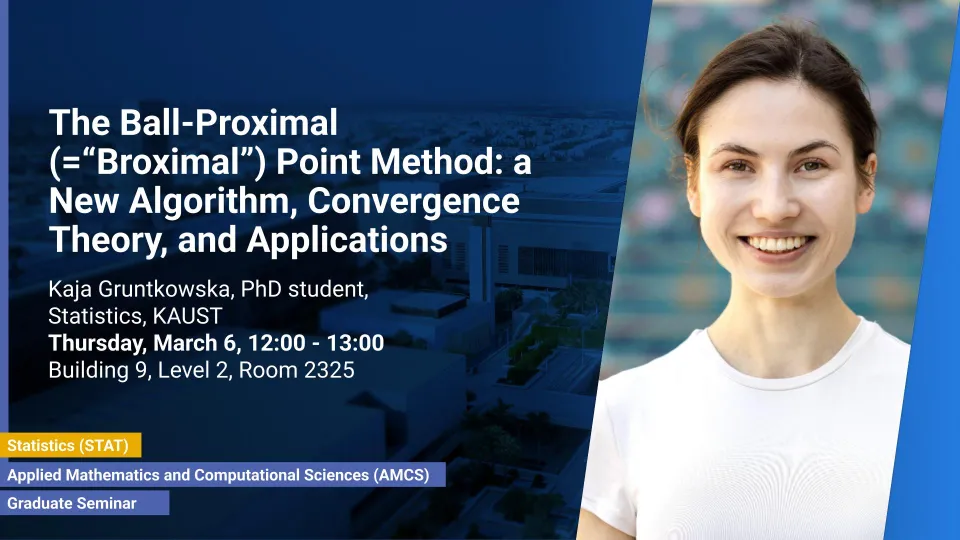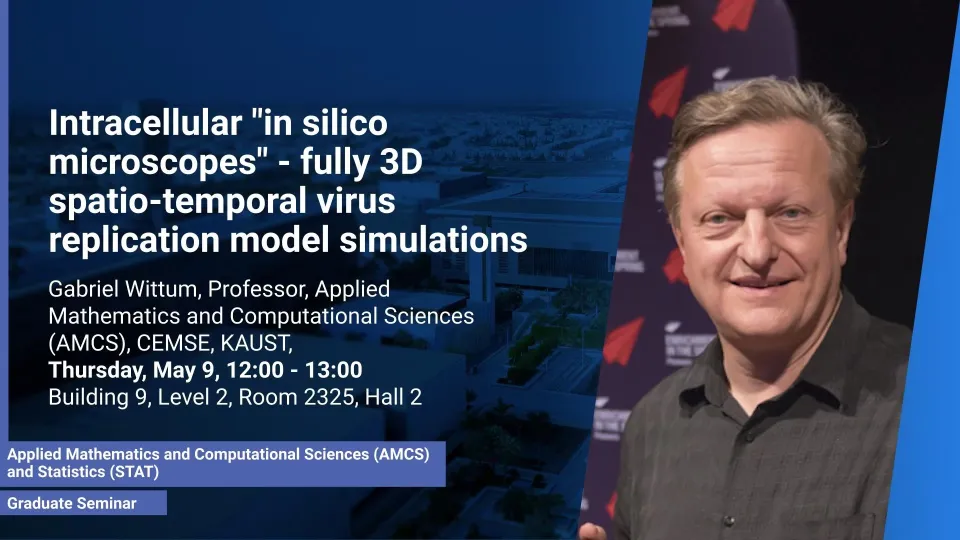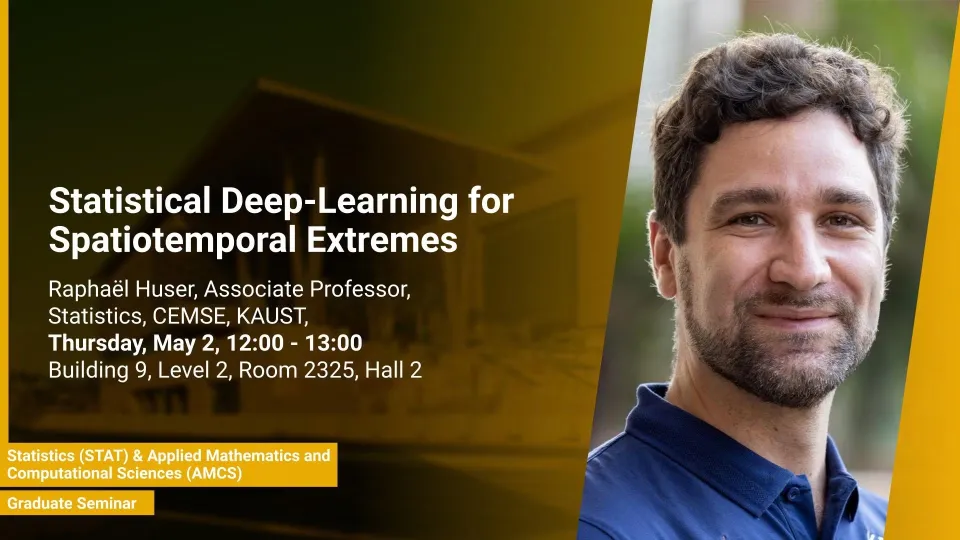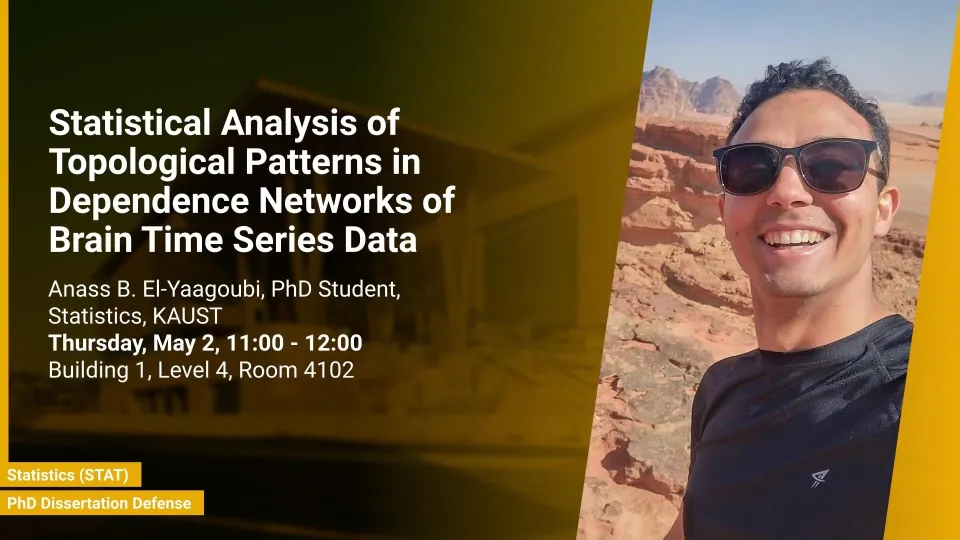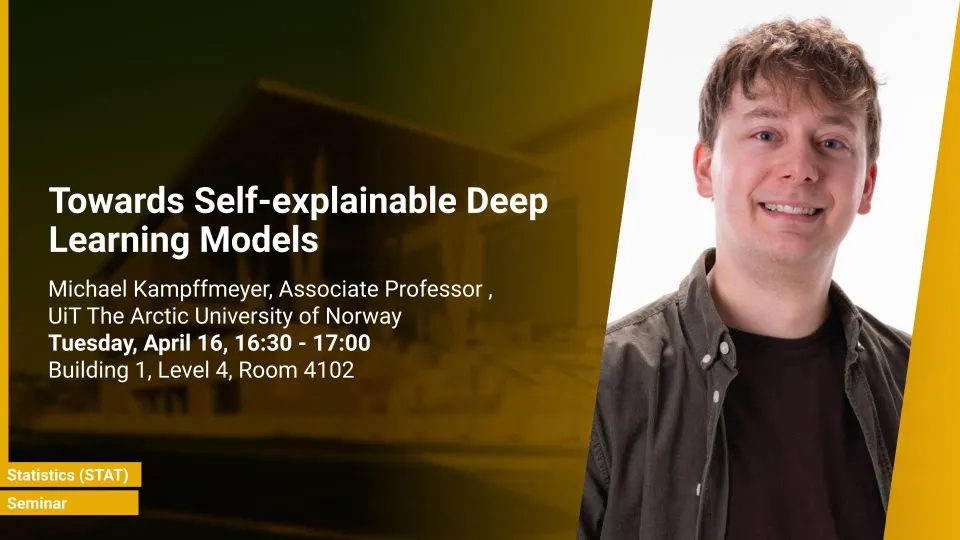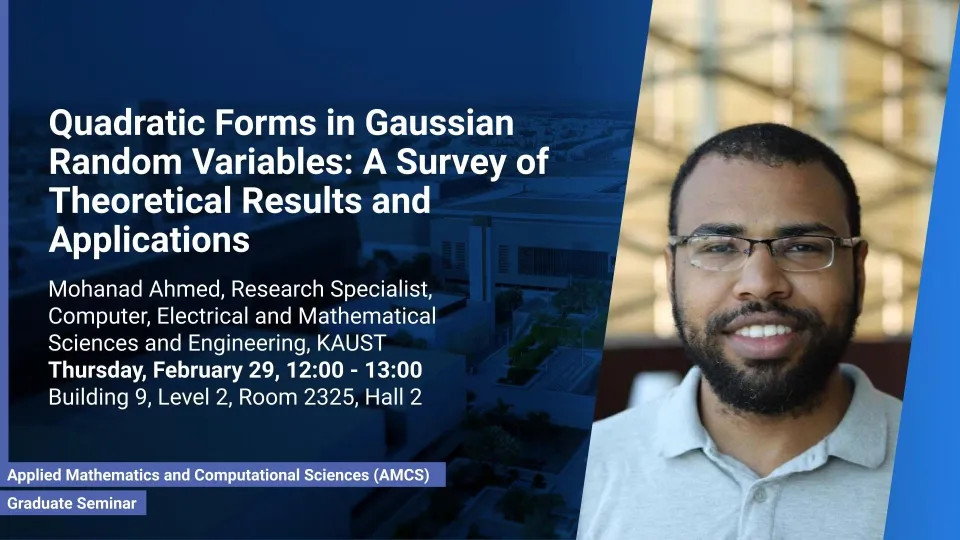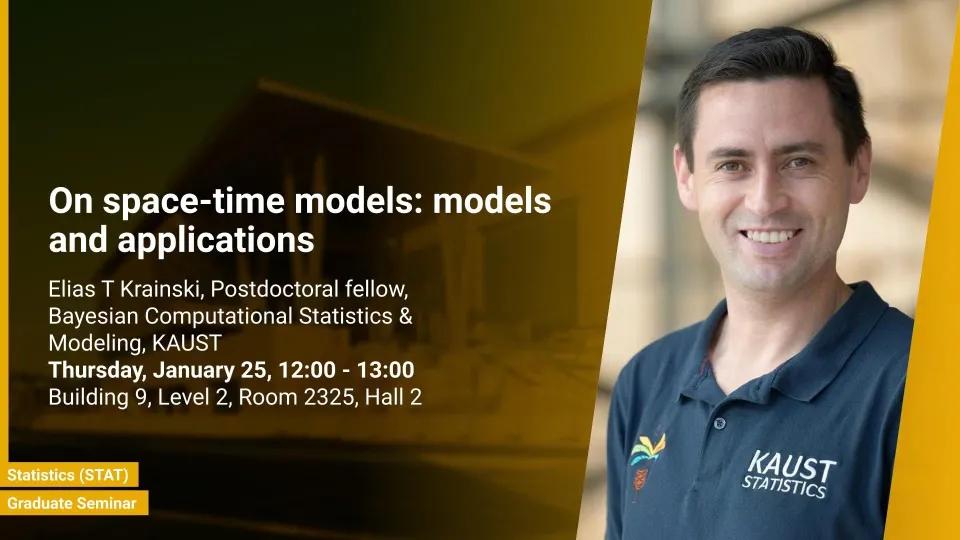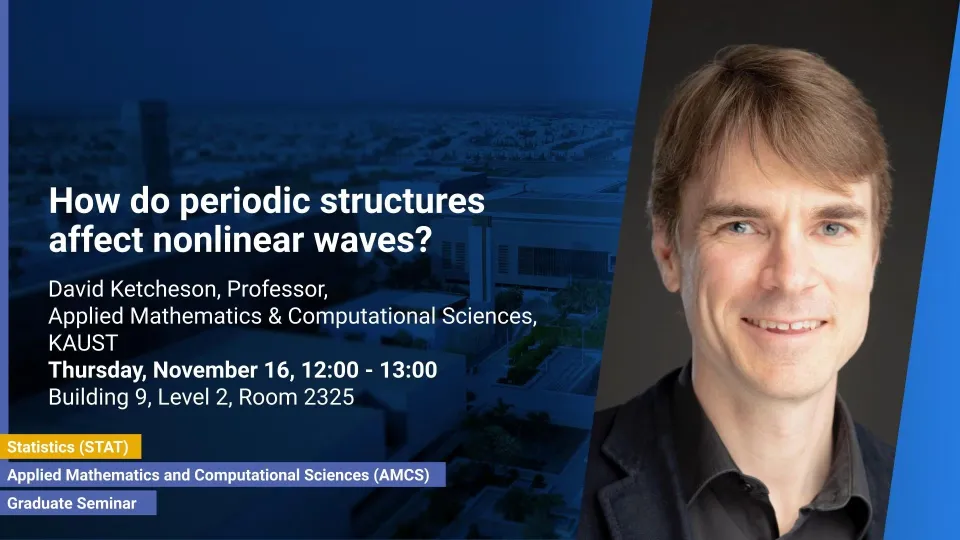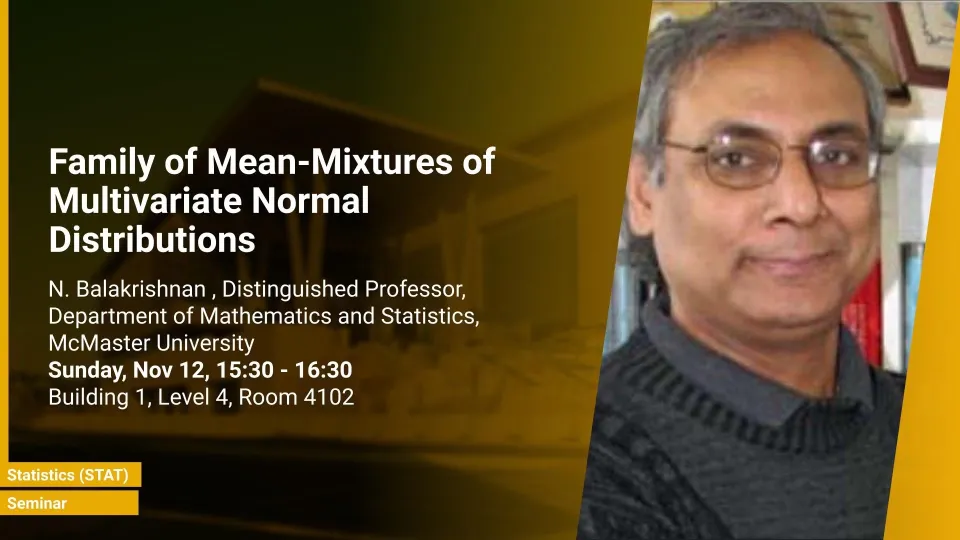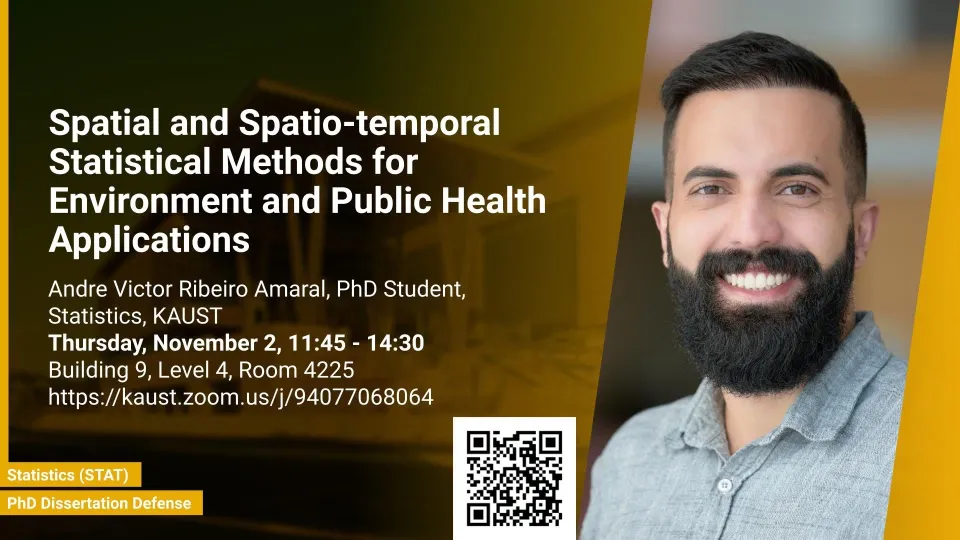Events
Apr 6 - Apr 12, 2025
Mar 23 - Mar 29, 2025
Mar 16 - Mar 22, 2025
Mar 9 - Mar 15, 2025
One-on-One Statistical Consulting for KAUST Researchers
-
B1 L4 R4102
Mar 2 - Mar 8, 2025
Feb 23 - Mar 1, 2025
Feb 16 - Feb 22, 2025
Feb 9 - Feb 15, 2025
Feb 2 - Feb 8, 2025
Jan 26 - Feb 1, 2025
Dec 1 - Dec 7, 2024
Nov 24 - Nov 30, 2024
Nov 17 - Nov 23, 2024
The KAUST 2024 Workshop on Statistics
-
Auditorium between Building 4 - 5
May 26 - Jun 1, 2024
May 19 - May 25, 2024
May 5 - May 11, 2024
Apr 28 - May 4, 2024
Apr 21 - Apr 27, 2024
On Distribution-Free Risk Control
Michael Jordan, Professor Emeritus, University of California, Berkeley
-
B9 L4 R4225
An Alternative View on AI: Collaborative Learning, Statistical Incentives, and Social Welfare
Michael Jordan, Professor Emeritus, University of California, Berkeley
-
Auditorium between B2 and 3
Apr 14 - Apr 20, 2024
Towards Self-explainable Deep Learning Models
Prof. Michael Kampffmeyer, UiT The Arctic University of Norway
-
B1 L4 R 4102
Can neural ODEs forecast weather?
Dr. Markus Heinonen, Academy Research Fellow, Aalto Univeristy, Finland
-
B1 L4 R 4102
Mar 31 - Apr 6, 2024
Mar 24 - Mar 30, 2024
Mar 17 - Mar 23, 2024
Mar 3 - Mar 9, 2024
Feb 25 - Mar 2, 2024
Feb 11 - Feb 17, 2024
Feb 4 - Feb 10, 2024
Jan 28 - Feb 3, 2024
Think globally, act locally: from domain decomposition to nonlinear model order reduction
Prof. Charbel Farhat
-
KAUST Auditorium R2030
Jan 21 - Jan 27, 2024
Dec 3 - Dec 9, 2023
Nov 26 - Dec 2, 2023
Nov 19 - Nov 25, 2023
Nov 12 - Nov 18, 2023
Family of Mean-Mixtures of Multivariate Normal Distributions
Prof. Narayanaswamy Balakrishnan, Department of Mathematics and Statistics, McMaster University
-
B1 L4 R4102
Nov 5 - Nov 11, 2023
Oct 29 - Nov 4, 2023
Oct 22 - Oct 28, 2023
Oct 15 - Oct 21, 2023
Latent Gaussian Spatial Modelling with Change of Support
Erick Chacon Montalvan, Postdoctoral fellow, Statistics Geohealth Group, KAUST
-
B9 L2 H2







